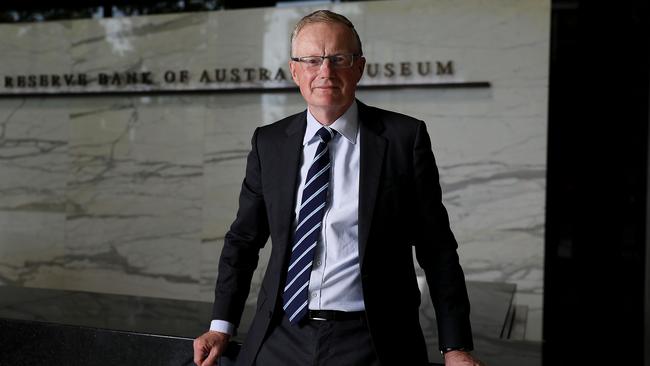Fixed rates to rise but variable mortgages on hold as banks protect their reputations
Fixed mortgage rates will continue to increase, but experts say variable rates are likely to be insulated.

Fixed mortgage rates will continue to increase next year, but experts say variable rates are likely to be insulated from rising bank funding costs as banks try to preserve reputational gains made since the financial services royal commission.
Data crunched for The Australian by financial comparison site Canstar shows a spate of fixed-rate hikes in 2021, as interest-rate expectations changed after inflation began to take hold.
Group executive financial services Steve Mickenbecker said the rates and movements demonstrated how closely banks followed the moves of their rivals, although ANZ had not reacted as quickly to the shift in funding costs.
“I don’t see the frequency of increases to be out of the ordinary at this point in the interest-rate cycle,” Mr Mickenbecker said.
“Also, increases in fixed-term rates don’t disadvantage borrowers per se, as they have only a one-off impact on borrowers in the market, unlike higher variable rates which have a much wider impact.”
On Wednesday, National Australia Bank unveiled a pre-Christmas round of increases to fixed-rate home loans for owner-occupiers and investors.
It was the second time this month that NAB had pulled the fixed-rate trigger, after rises of up to 0.5 per cent on December 2.
In the first half of this year, fixed-rate home loans were the lowest in the market, but they have now been displaced by variable rates after multiple hikes in recent months.
The slew of increases has had little impact on the value of new loans, with Canstar analysis showing the average loan size for owner-occupier borrowers over the past year has jumped $74,054, or 16 per cent, to $524,257 in October.
The big swing factor next year is likely to be the impact on variable rates of further increases in bank funding costs.
Other analysts speculated that the banks would seek to protect their community standing, enhanced in the early stages of the pandemic when they agreed to defer interest repayments on $270bn of home and business loans.
With Reserve Bank governor Philip Lowe saying a hike in the cash rate from its record low of 0.1 per cent is unlikely until 2023, the banks have lost their usual trigger event for an increase in variable rates.

Credit Suisse bank analyst Jarrod Martin predicted that next year would be “very tough” for bank interest margins.
“The worst possible margin environment for a bank is when the market anticipates an increase in the cash rate, which means funding costs go up, but the increase doesn’t come through,” Mr Martin said.
“That means the banks don’t get their usual repricing event.
“They could announce out-of-cycle rate increases, but they’ve just spent the best part of 18 months repairing their reputations and they want to hold on to that for as long as they can.”
Independent economist Saul Eslake said the RBA, which has kept the cash rate on hold for 12 consecutive board meetings, was likely to break that sequence in the first half of 2023.
He acknowledged that financial markets thought differently, with 2022 seen as more likely. The central bank has said it won’t lift the cash rate until wage growth pushes inflation sustainably into the target band of 2-3 per cent.
“I don’t believe conditions will be right (for an increase in official rates) in 2022,” Mr Eslake said.
“And I don’t think the banks will be under sufficient pressure to endure the political odium of lifting rates out-of-cycle.”
A further scenario involving the use of RBA exchange settlement accounts (ESAs) as part of the recent bond-buying program was likely to make variable rate increases highly unlikely, he said.
The RBA pays the private sector for these assets by creating central bank reserves, or ESAs, which pay interest according to the cash rate less 10 basis points.
While the ESA balance has mushroomed in size from about $25bn before the advent of Covid to almost $420bn, the RBA is paying no interest because the cash rate is only 10 basis points.
“So once the cash rate normalises, the RBA will start paying a lot of interest to the banks unless it shrinks its portfolio of bonds,” Mr Eslake said.
“If the cash rate gets to 1 per cent, possibly in the first half of 2024, the RBA will be looking at $3.7bn in interest payments to the banks.
“Some people are likely to see that as a subsidy to the banks, with unrealised losses on the bond portfolio likely to crimp the RBA’s ability to pay dividends to the government. That would make it even riskier from a PR point of view for the banks to increase their variable rates.”
Mr Mickenbecker said longer-term fixed rates had so far seen the biggest increases, which were typical of the return to a normal yield curve during a reversal of the interest-rate cycle.
“More recently, the three-year rate has seen large increases, with the evidence pointing to a general rate increase, perhaps late in 2022, that will carry through to existing variable-rate borrowers,” he said.
“The banks’ lead rates 12 months ago were fixed, and the four and five-year terms were particularly attractive, but that horse has now largely bolted, with the longer-term fixed loans now around 1 per cent higher than variable.
“The banks are competing hard with their basic variable loans, but borrowers can be almost certain that they will be dealing with increases within two years, likely sooner.
“There are still amazing interest rates available now, with Canstar listing 140 loans with rates below 2 per cent. Refinancing into a low-rate loan should still be a New Year’s resolution.”







To join the conversation, please log in. Don't have an account? Register
Join the conversation, you are commenting as Logout